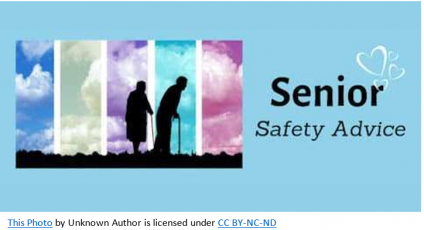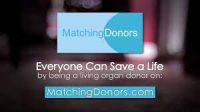 By David R. Shorey, East County Program Manager, Institute for Public Strategies
By David R. Shorey, East County Program Manager, Institute for Public Strategies
September 8, 2022 (San Diego) -- Methamphetamine use impacts every part of our society. While often viewed as a misuse disorder that affects younger adults, people over the age of 65 are increasingly using methamphetamine in San Diego County and it has definitely become an issue for the Aging and Independence Services Department, according to officials. The rise in meth use is among both chronic users with a history of drug abuse and new users who have been introduced to meth by caregivers in their home.
A report card issued by the San Diego County Methamphetamine Strike Force showed there were 169 unintentional meth-caused deaths in the county in 2020 in the 55-64 age group, accounting for 31% of such deaths. There were 37 unintentional meth-related deaths among those who were 65 and older. That’s more than any other age group. The 2022 Methamphetamine Report Card is scheduled for release in the fall.
 The reasons older adults are turning to or returning to meth are varied. It’s complicated, but usually has to do with vulnerability. It typically starts with the older adult meth user inviting someone they don’t know into their home and putting them in a position of trust. They are isolated and want human connection, so they turn to online classified advertisements to hire in-home help. That can often lead to allowing predators with ulterior motives to get close. The victim becomes easy to manipulate while the so-called helper is clearing out their bank account or worse.
The reasons older adults are turning to or returning to meth are varied. It’s complicated, but usually has to do with vulnerability. It typically starts with the older adult meth user inviting someone they don’t know into their home and putting them in a position of trust. They are isolated and want human connection, so they turn to online classified advertisements to hire in-home help. That can often lead to allowing predators with ulterior motives to get close. The victim becomes easy to manipulate while the so-called helper is clearing out their bank account or worse.
Or it can be simply that the over-60 person has medical issues and turns to methamphetamine instead of using prescription medications. A study in Generations Journal, a publication of the American Society on Aging, focused on meth use among older men who have sex with men. It found that older men may be more likely to use meth for sexual reasons and less likely for social reasons compared to their younger counterparts. Whatever the reasons older adults are using meth, there is help available to quit. And there are signs to look for among family, friends and neighbors who may suspect elder abuse at the hands of others.
 Photo left via Creative Commons
Photo left via Creative Commons
It starts with having a social connection. The elderly population is frequently isolated without a trusted person in their life. Be there for them. Be a friend. Check in on them often. Let them know you are trusted and can be a confidant. Offer to pick up their groceries. Let them know you are trustworthy and won’t harm them. Steer them toward senior centers, churches and other social opportunities so they will be less isolated. Support healthy lifestyle choices and encourage health screening and engagement in drug treatment.
Observe and report questionable or illegal behavior to Adult Protective Services. They can investigate and refer elder abuse cases to law enforcement. Signs that something may not be right could include a lot of traffic into the home by people that did not previously live there; changes in the person like weight loss, confusion, irritability; changes in finances like large withdrawals and changes in spending and financial habits.
 The County’s Health and Human Services Agency has several facilities in the East Region, including Aging and Independence Services for older adults. East County is the second largest geographical area, with a diverse geographic area and a population of more than 488,000 residents. It’s comprised of four cities and unincorporated areas, suburban and rural communities, and Indian reservations. The communities of El Cajon, La Mesa, Lemon Grove, Santee, Alpine, Spring Valley, Lakeside and Mountain Empire are all served in the East Region.
The County’s Health and Human Services Agency has several facilities in the East Region, including Aging and Independence Services for older adults. East County is the second largest geographical area, with a diverse geographic area and a population of more than 488,000 residents. It’s comprised of four cities and unincorporated areas, suburban and rural communities, and Indian reservations. The communities of El Cajon, La Mesa, Lemon Grove, Santee, Alpine, Spring Valley, Lakeside and Mountain Empire are all served in the East Region.
Elder Multicultural Access and Support Services (EMASS) serves Iraqi, Chaldean, Filipino, African American, Somali and Latinx adults 60 years old and older with outreach, engagement and education for prevention and early intervention of mental illness and mental health challenges. Our culturally specific Community Health Workers help at-risk seniors connect to social services and navigate the health care and welfare system. Additionally, they provide socialization opportunities at both centers and community or apartment buildings where seniors gather on a weekly basis. EMASS is a place where older adults can feel welcome and appreciated. Call (760) 233-1984 for more information.
 The Union of Pan Asian Communities (UPAC) Positive Solutions program provides health and human services focused on improving the overall well-being of underserved diverse populations and provides assistance in more than 30 languages at 15 locations across the county. Programs focus on mental health counseling, community engagement and addiction treatment & recovery.
The Union of Pan Asian Communities (UPAC) Positive Solutions program provides health and human services focused on improving the overall well-being of underserved diverse populations and provides assistance in more than 30 languages at 15 locations across the county. Programs focus on mental health counseling, community engagement and addiction treatment & recovery.
Our older adult population faces many challenges to begin with. A methamphetamine use disorder isn’t one that needs to be added to the mix. If you are someone you know is looking for help to address their substance use disorder, the Access and Crisis line can offer resources for treatment. The number to call is 1-888-724-7240.
 IPS works alongside communities to build power, challenge systems of inequity, protect health and improve quality of life. IPS has a vision for safe, secure, vibrant and healthy communities where everyone can thrive. To find out more about IPS East County, follow us at: https://www.facebook.com/IPSEastCounty or by clicking on the links to our social media platforms: IPS East County Facebook, IPS East County Twitter, East County Youth Coalition Instagram.
IPS works alongside communities to build power, challenge systems of inequity, protect health and improve quality of life. IPS has a vision for safe, secure, vibrant and healthy communities where everyone can thrive. To find out more about IPS East County, follow us at: https://www.facebook.com/IPSEastCounty or by clicking on the links to our social media platforms: IPS East County Facebook, IPS East County Twitter, East County Youth Coalition Instagram.











Recent comments